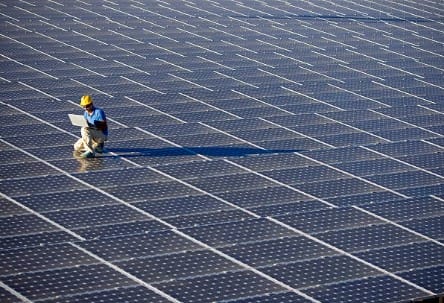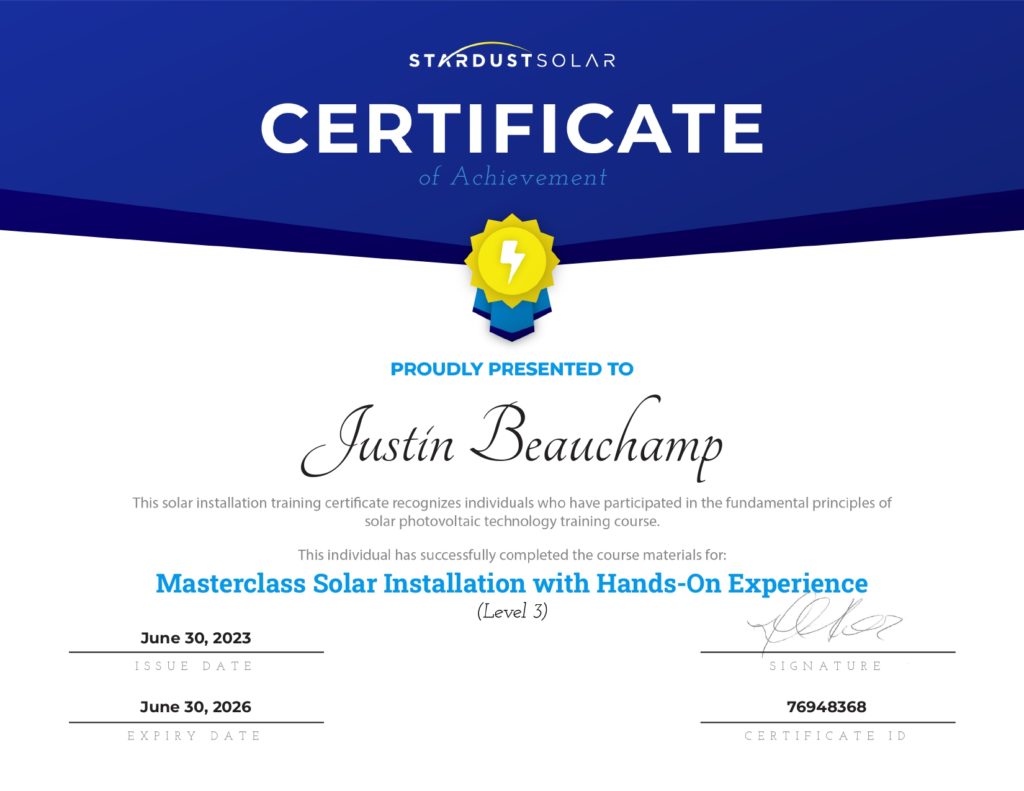As homeowners increasingly invest in solar energy, they must thoroughly comprehend system maintenance to ensure optimal performance. Canadian solar energy is expected to grow by USD 2.25 billion at a CAGR of 24.16% between 2023 and 2028.
Regular maintenance can boost solar panel efficiency by 20% and extend their lifespan by 25 years. Solar firms deploy preventative and reactive maintenance measures to maximize home panel performance.
Dependable “solar power companies near me” are essential to the longevity and effectiveness of your solar energy system. Preventative measures like cutting vegetation and inspecting wiring and reactive measures like firmware upgrades and electrical fault repairs are also necessary for the system’s performance.
Mastering Solar Maintenance
Differentiating Preventative and Reactive Maintenance
Preventative maintenance entails regular inspections, cleaning, and servicing of panels and their components to optimize performance and prevent difficulties.
- Main tasks include examining panels, wiring, and mounting structures for physical damage and fixing minor concerns immediately.
Reactive maintenance occurs after a problem.
- This maintenance tackles unforeseen faults and failures that affect the system’s functioning. Troubleshooting and diagnosing system errors are crucial.
Importance of Solar System Maintenance
- Panel Efficiency: Solar panels and the system run most efficiently with regular maintenance. Dust, grime, and debris can limit panels’ sunlight absorption and electricity generation.
- Longevity: Preventative solar maintenance prevents costly repairs and component replacement by addressing minor concerns before they become significant.
- Safety: Electrical fires can result from faulty components, weak connections, and damaged panels. Inspections and maintenance identify and reduce these hazards.
Preventative Measures
Trim Nearby Vegetation
Shade management reduces vegetation shade to improve panel performance. Shadows from overgrown trees and bushes diminish panel performance. Due to interconnected panels, even slight shadowing might reduce power output.
Implementation
- Regular Trimming: A clear passage for sunshine requires regular vegetation cutting around the solar array. Keeping panels shade-free maximizes energy generation.
- Solar Path Analysis: Advanced path analysis software predicts shadowing patterns throughout the day and season. This information guides strategic trimming schedules to reduce shading while considering system position.
- Selective Pruning: Selected pruning balances shade reduction and ecological protection by strategically trimming vegetation. This method reduces shading while respecting nature.
Inspect Wirings
Wiring vigilance involves regular inspections and maintenance to find and fix wiring risks in solar energy setups. Electrical wire integrity is essential for system safety and efficiency. Frayed, broken, or incorrectly connected wires can result in voltage fluctuations, power loss, and electrical fires or electrocution.
Schedule Inspections
To evaluate all wiring components, qualified technicians must inspect them biannually. This includes cables, connectors, and junction boxes, detecting wear, corrosion, and degradation early.
Thermal Imaging Surveys
Using thermal imaging during inspections can discover aberrant temperature distributions. This can suggest loose connections or excessive resistance, allowing early action before problems grow.
Maintenance Preventative
An organized preventive maintenance program includes torque verification, insulation resistance testing, and electrical continuity checks. These procedures protect wire and reduce system downtime.
Controlling Pest Infestations
Critter control techniques protect the system’s cables and components from wildlife. Effective pest management requires knowledge of typical system threats. Birds, squirrels, raccoons, and rodents often damage panels and components.
Implementation
- Physical Barriers. Barriers, like mesh enclosures or fences, discourage rodents, birds, and other pests. Restricting access to vulnerable components reduces damage.
- Ultrasound Deterrents. Ultrasonic repellents dissuade wildlife without injury. These gadgets strategically placed around the solar array perimeter deter pests.
- Regular Monitoring. Regular surveillance reveals pest activity early. Check for gnaw marks, nesting materials, and other wildlife signs.
- Habitat Modification. Reducing the habitat’s appeal to animals reduces the risk of infestation. Remove food sources, cut vegetation, and seal access points.
Safeguarding Panels
Panel protection techniques prevent environmental damage and extend its lifespan.
Implementation
- Weatherproofing Measures: Weather-resistant coatings or sealants on panel frames and mounts prevent corrosion and moisture ingress. This makes the panels more durable, especially in severe environments.
- Impact Reduction: Panel mounting solutions with stronger supports and frame protection offer better resistance to hail, debris, and falling objects. This prevents panel damage and prolongs their life.
- Cleaning Routine: A regular panel cleaning with approved procedures and cleaners removes dirt, dust, and debris. It maximizes light transmission and energy capture, maintaining panel efficiency.
Reactive Responses
Update Firmware
Solar energy system optimization and security require firmware updates. These updates fix issues, boost performance, secure the system, and add features.
Timely Installation
Regularly check the system manufacturer’s website or user portal for firmware upgrades. Install during low power demand to minimize interruption. A commercial solar farm updates overnight when energy demand is low to keep the system running during peak hours.
Monitoring Automation
Use system monitoring tools to notify maintenance teams of firmware changes. This expedites update detection and installation.
Backup and Recovery
Back up system data before firmware changes to avoid data loss and provide a speedy recovery if issues arise.
Fix Electrical Issues
Quickly and precisely fixing electrical issues reduces system downtime and ensures safety. Faults might be short circuits, ground faults, or component failures.
Fast Diagnosis
- Multimeters measure circuit current and voltage.
- Insulation resistance testers are used to assess insulation quality.
- Thermal cameras are used to find hotspots.
Competent Technicians
Maintain a team of solar energy system-certified electricians for quick troubleshooting and repairs. A licensed technician swiftly fixes a junction box connection that dropped system performance.
Ensure Structural Stability
Solar panels and mounting hardware must be structurally sound for long-term performance and safety. Weather conditions like wind, snow, and thermal expansion can cause structural problems.
| Implementation Aspect | Description | Example |
| Routine Inspections | Check panel brackets, mounting hardware, and supporting structures for problems. | Quarterly inspections of a rooftop solar array identify loose bolts that are promptly tightened. |
| Immediate Inspections | Perform immediate structural damage inspections after extreme weather. | After a windstorm, a maintenance team checks mounting hardware and tightens a loose bracket. |
| Re-Securing Components | Fix loose or damaged mounting hardware quickly to guarantee structural stability. | Torque wrenches tighten fasteners loosened by heat expansion and contraction. |
| High-Quality Materials | Use corrosion-resistant materials to resist environmental stress and degradation. | Weatherproof stainless steel fasteners and UV-resistant plastic mounts extend product life. |
| Reinforcement | If mounting structures keep breaking, reinforce them to prevent future concerns and increase endurance. | In high-wind areas, panel mounts need bracing to avoid movement and damage. |
Replace Components
Replace broken or malfunctioning parts quickly to restore system functionality and save downtime.
- Use on-hand spares to repair damaged components immediately to minimize disturbance.
- Make sure new parts are high-quality and system-compatible to avoid problems. Manufacturer-approved replacement parts ensure compatibility and reliability.
- Record component replacements, including failure and replacement procedures, to track system performance and identify reoccurring issues. Monitoring inverter replacements in a maintenance database reveals which ones fail more often.
Proactive Preparation
Strong contingency plans and emergency response methods ensure quick and effective action when unforeseen issues arise, protecting system integrity and performance. This allows to embrace clean energy from the sun successfully.
Implementation
- Emergency Plans. Create extensive strategies for system failures, including communication channels and roles.
- Drills and Training. Provide frequent training and emergency drills for commercial panel users to ensure staff are familiar with response methods and can respond quickly under pressure.
- Power Backups. Battery storage or standby generators maintain power during system maintenance or grid disruptions. When inverters fail, a battery storage system delivers electricity during repairs, preventing downtime.

Get The Most Out Of Your Solar Investment
Residential system maintenance requires a balance of preventative and reactive approaches. By spending money on preventative and reactive maintenance, you can safeguard your solar investment and ensure it lasts.
Choose MAG Solar for your solar panel installation and join the forefront of the solar industry. Now, you can reduce your carbon footprint and greenhouse gas emissions while saving money on your utility company bills.
Frequently Asked Questions
How should I handle a broken solar system?
Here are the initial steps to take if your solar system unexpectedly stops functioning:
- Check the Inverter. Error messages or indicator lights may reveal the problem.
- Refer to Your Manual. Start with the system’s troubleshooting handbook.
- Contact Professional. Consult your installer or a skilled technician for diagnosis and repair if the problem persists.
How can I tell if my solar system has an electrical problem?
Here are some signs of electrical problems:
- Lower Output: A drop in energy production.
- Error Messages: The inverter or monitoring system may display error codes or warning lights.
- Overheating Parts: Thermal imaging shows unusual heat patterns.
- Visible Damage: Wear and tear, such as frayed wires or burned connectors.
Do I need to hire a professional to maintain my solar system, or is it something I can do myself?
While homeowners can clean panels and undertake visual checks, they should employ a professional for more technical duties. Inspections, repairs, and diagnostics of electrical systems are best left to trained professionals with the experience and equipment to do the work safely.

